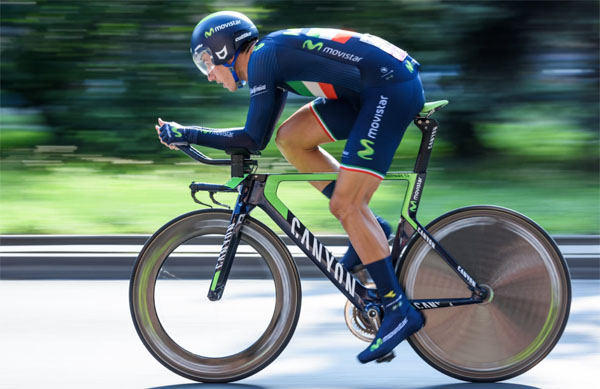Are Today’s Athletes Stronger or Just Smarter?
By Space Coast Daily // July 18, 2025

Records keep falling. Athletes run faster, look more powerful, and move more precisely. But what is behind it – naked strength or something more? Olympic sprinters and MMA fighters from the gyms of Yangon, Myanmar, show results that seemed out of this world just a couple of decades ago. So what is the secret? New training methods? Technology? A mental approach? And here is the main question: Can an athlete from 2025 beat a champion of the 90s if you remove the equipment and gadgets, leaving only pure ability? Let’s figure it out in this article.
How Training Has Evolved
Today’s training is not just about running and weights. It is about data, technology, and maximum individualization. In Myanmar, Yangon United footballers are already using GPS vests: they record distance, sprints, and recovery speed. In other countries, the emphasis is shifting to agility, coordination, and game movements that really matter on the field. Along with this, the role of fans is changing: with the MelBet download app, you can follow matches in real time, place bets, and launch more than 8,000 casino games. The app is available on Android (via APK file) and iOS (via App Store), turning your phone into a personal sports and entertainment center. Download it today, it is fast, convenient, and always at hand.
Smarter Recovery, Better Output
Nutrition has long since moved away from simple pasta and a bottle of water. Today, Myanmar’s best weightlifters count macros with pinpoint precision – every gram under control. Infrared saunas, ice baths, and special recovery boots are used. LeBron James spends over one and a half million dollars a year to maintain his body, and this only emphasizes that rest and recovery play no less of a role than the training itself.
Modern technologies are not only available to the elite. Sports fans are also getting involved: they use sleep tracking rings, heart rate variability sensors, breathing, and meditation apps. And if you are not an athlete but love the competitive element, you should try the MelBet free bet in Manyam. The platform offers not just bets, but a whole sports environment with guides, bonuses, free bets, and support for more than 50 sports, from classic to eSports. The Live section is especially addictive: events are non-stop, and bonuses can be activated right during the game!
Tech Meets Talent in Modern Sports
When technology became part of sports, everything changed—and not just for the pros. Today, even amateurs use tools that were only available at the Olympic level until recently. Here’s what the modern arsenal looks like:
- Wearable sensors: WHOOP bracelets, Garmin watches, and other trackers track fatigue, sleep, heart rate, and recovery in real time.
- AI apps: Freeletics, Future Coach, and other platforms create personalized workouts that adapt to the user’s shape and goals.
- Biomechanics: Young Muay Thai stars in Myanmar use labs to more accurately build stances, movements, and attack angles.
- Virtual reality: In boxing, fencing, and other sports, VR helps simulate combat situations without physical exertion and injuries.
These technologies do not replace talent — they reveal it. And they make an athlete not just resilient, but truly effective.
Mental Strength as a Hidden Edge
Mental preparation was once considered secondary—the main thing was to run, jump, and lift weights. Today, everything is different. The psyche is the foundation. More and more athletes work with psychologists, concentration coaches, and meditation specialists. In Myanmar, young table tennis talents mentally replay every move before a match: serve, rebound, return. They play in their heads long before they go to the table.
Visualization, emotional control, stress management—these are the things that matter in critical seconds. When a UFC fighter enters the octagon or a sprinter gets up to start, composure becomes a real weapon. And this is not a theory—the statistics speak for themselves: more than 85% of Olympic champions are sure that mental training is as important as physical training.
Redefining Strength in the Digital Era
Physical strength no longer defines everything. Today, “strong” is someone who can manage all aspects of their career:
- Understanding data: helps adjust training, spot weaknesses, and adapt.
- Presence on social media: an athlete is a brand, and their engagement affects sponsors, contracts, and overall influence.
- Interdisciplinary approach: MMA fighters learn not just one style, but several at once—jiu-jitsu, wrestling, muay thai, and others.
- Deep concern for health: microbiome testing, DNA diets, and monitoring all biomarkers have become the norm.
In 2025, strength is not about how much you lift. It’s about how you think, adapt, and evolve.

Old-School vs. New-School Athletes
Old-school athletes are pure strength, character, and conditioning. Think of Michael Jordan stepping onto the court with a fever, or lethwei fighters practicing their punches on the streets of Mandalay. There was no room for softness there—only will, pain, and hard work.
New-generation athletes do things differently. Everything is under control: oxygen levels, fluid balance, resting heart rate. Instead of grueling two-hour workouts—short sessions with a clear goal: not to burn out and squeeze out the maximum. It’s neither better nor worse—it’s just a different path. And it seems that the main advantage today is the ability to combine science and experience.
Progress Is More Than Muscle
Modern sports aren’t just about weight on the bar or time on the scoreboard. They’re about evolution. Smarter bodies, more focused minds, and tools that never existed before. Today’s athletes aren’t just strong. They’re precise, adaptive, nearly impossible versions of themselves. And that’s where their true power lies.












